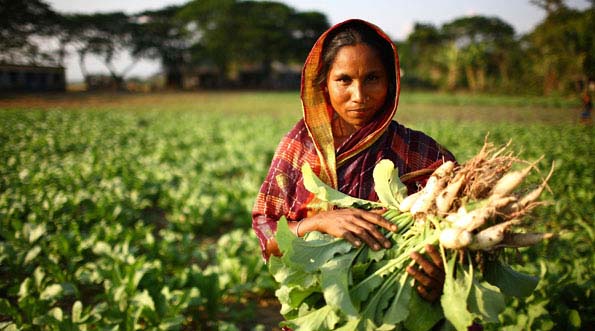The Global Nutrition Report (GNR), hosted by Development Initiatives (DI) and funded by the UK’s Department for International Development and other donors, is an annual report card on the world’s nutrition—globally, regionally, and country by country—and on efforts to improve it. With a wealth of data and analysis, the report aims to improve accountability among the governments, institutions, businesses, and others whose actions affect people’s nutrition. At the Nutrition for Growth (N4G) summit in 2013, governments, UN agencies, civil society organisations, businesses, donors, and other organisations gathered to consider how to improve nutrition worldwide. To achieve this goal, the GNR monitors progress of financial and non-financial commitments of N4G signatories to enhance accountability, transparency and further drive nutrition action. Since 2014, Maximising the Quality of Scaling Up Nutrition (MQSUN) and its follow-on project, MQSUN+, have supported the GNR. Over the last couple of years, Ms. Jolene Wun, a monitoring and evaluation specialist, has supported the processes of collecting and analysing progress in achieving the stated N4G commitments.
Recently, MQSUN+ had the chance to get Ms. Wun’s perspective on tracking N4G nutrition commitments:
For the past two years, you’ve been involved in collecting and analysing progress statements for all N4G commitments. How would you generally describe that experience?
It is quite the organisational challenge, since there are over 100 organisations to contact and over 200 commitments to track and review! Sometimes, just finding even the right person at the organisation can take a while whenever there’s turnover. And the diversity in the stakeholders that we contacted (government representatives versus big donors, for instance) made it such that we had to customise our outreach approaches and the way we transmitted information to them. Overall, though, we were able to reach almost everybody we intended to.
Ultimately, though, we received responses for only about half of the commitments—so, quite literally, the experience has been a mixed bag. On one hand, we’ve been grateful to the organisations that have to balance our request with their existing workload and get their response through their internal channels in order to get it to us; on the other, it’s a bit of a disappointment to do all of the outreach just to have half of it ignored.
Why do you think the response rate has been so low? Could it be reporting fatigue, since it’s been several years since they originally made the commitment?
We’ve definitely seen a drop-off in response rates between 2014 and 2019, but the degree to which the rates fell really depends on the organisation type. The biggest drop-offs over time have been among civil society organisations and businesses, whereas donors, UN agencies, and other organisations have maintained a response rate above 70% across all years. Country governments’ response rates definitely dropped off rapidly over time, but once we reached out to them through the SUN Movement Secretariat, responses quickly picked up again. So, I think there might be a lot of different reasons for non-response: reporting fatigue, organisational turnover, and (at least among some organisations) lack of clarity on the importance of reporting on N4G and how it fits in with other reporting structures for global nutrition efforts.
What is the ideal window of opportunity to track commitments? Do you think a shorter time frame would improve engagement with the N4G commitment process?
I do think that giving stakeholders the option to set their own time frame, rather than making the end of a decade the default endpoint (as with the 2013 N4G commitments), could not only increase response rates but also a general sense of ownership, since they’ll have to think through what exactly they can get done and when. I also think organisations can vary in terms of their ability to set short-term versus long-term goals. For instance, a business or small NGO might only be able to forecast what can be done in a year or two, whereas a country will need a longer time frame in order to reduce child stunting by X%. For organisations that can only make short-term commitments, perhaps having them create new commitments on a semi-regular basis would also keep them engaged in the process.
Turning now to how you assessed N4G commitments, how objective do you think your team has been in assessing and rating the responses on the nutrition commitments?
We’ve done our best in terms of objectivity—and have methods for building consensus whenever there’s disagreement between reviewers—but I think the biggest barrier to objectivity is the commitment language itself. Aside from the financial commitments, many of the 2013 N4G commitments were lacking the first component of SMART—that is, specific. Vague commitments to improve nutrition were always rated by us as “on track”, as long as anything in that general realm was done. And that rating obviously does not mean much.
Whilst I am on the topic of SMART, one other thing that has been on my mind as I’m reviewing the commitment progress updates has been the “M” part, which often is thought of as “measurable” or “meaningful”. As someone not part of the organisation, “meaningful” is not always clear to me from the language of the commitment and should maybe be pushed for in the future. Do the commitments represent business as usual, or are they a goal to strive for? If we’re going to go through all of the trouble of tracking the commitments over several years, I think we should ensure that they’re the latter.
Do you have any other recommendations for change in the methodology of tracking nutrition commitments moving forward?
I think the most important step is to push all potential commitment-makers to make good commitments, and to follow up with them when they’re not. If they cannot make them SMART, it is not nearly as useful to track them.
Beyond that, I think working through existing reporting structures may help, particularly for organisations that have to do similar reporting for other nutrition gatherings and exercises.
To address the issue of employee turnover, I think that when organisations make commitments, they should provide not only the contact information of the person responsible for reporting, but also their title and/or office as needed. Then it would be mutually understood that regardless of whether that person leaves, the responsibility remains with the institution. I suppose it is not unlike turnover issues with the nutrition workforce in general, in that way.





